A national flag is one of the first rites of passage when a country gains independence. Each one tells a story about the country’s history and culture. And while Chad and Romania are nearly indistinguishable, some flags have incredibly beautiful and unique designs. Here are 18 of the coolest national flags and what their designs represent.
1. Albania
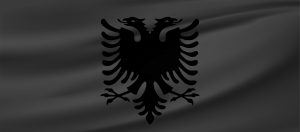
Adopted: 1992
The Albanian flag is easy to spot thanks to its bold red background. The silhouette of the double-headed eagle comes from the symbol of the Byzantine Empire, which Albania once belonged to.
2. Antigua and Barbuda

Adopted: 1967
The gold, blue, and white on the Antigua and Barbuda flag portray the country’s natural tourist attractions: sun, sea, and sand. The sun depicts the dawn of a new era with a black background that represents the country’s African ancestry. The red background, shaped like a V for victory, symbolizes the energy and power of the people.
3. Belize
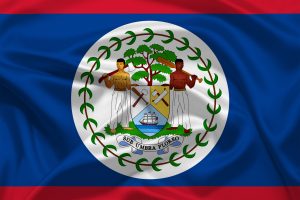
Adopted: 1981
The Belize flag symbolizes the importance of the mahogany industry to the nation’s economy. Featuring their national motto Sub Umbra Floreo (“Under the Shade I Flourish”), the coat of arms shows two woodcutters – one holding an axe and the other holding a paddle. Above the two men is a large mahogany tree.
4. Bhutan
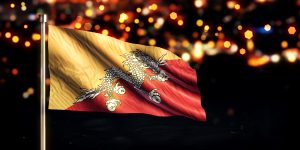
Adopted: 1969
Bhutan’s flag features the Thunder Dragon, their national emblem, in white to represent purity and loyalty. The orange portion of the background represents the Drukpa monasteries, while the yellow represents the authority of the royal family.
5. Brazil

Adopted: 1889 (updated in 1992 to add 6 stars)
One of the most recognizable on our list, the Brazilian flag is known for its vivid combination of blue, green, and yellow. Originally representing the ruling Portuguese families of Brazil, the green background came to symbolize the country’s lush forests after a coup d’etat. The imperial arms were also replaced by a blue globe, which, like the U.S. flag, features white stars to represent the states of Brazil. A white band underneath reveals the country’s motto, Ordem e Progresso (“Order and Progress”).
6. Cambodia
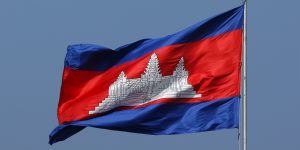
Adopted: 1948-1970, then 1993
Originally adopted when Cambodia gained independence from France in 1948, this flag was replaced under the Khmer Republic in 1970. Cambodia also had two other flags before re-adopting this one in 1993, when the monarchy was restored. The flag features Angkor Wat (“Capital Temple”), the largest religious monument in the world and the country’s most famous attraction.
7. Croatia
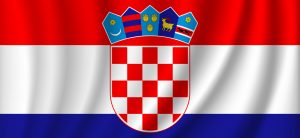
Adopted: 1990
The Croatian flag features a red and white checkerboard coat of arms, made of one main shield and five smaller shields that form a crown top. From left to right, the smaller shields represent five of Croatia’s regions: Croatia, Dubrovnik (a.k.a. Ragusa), Dalmatia, Istria, and Slavonia.
8. Grenada
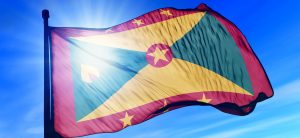
Adopted: 1974
The red stands for courage and vitality; the gold for wisdom and the warmth of the sun and people; and the green for the fertility of the land. The seven gold stars symbolize the country’s seven parishes, while the nutmeg on the left represents Grenada’s reputation as the “Isle of Spice”.
9. Haiti
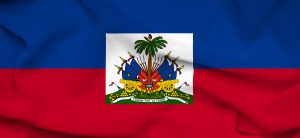
Adopted: 1986
The beauty of the Haitian flag is in the details of its national coat of arms. The arms features a palm tree, a symbol of independence, topped by a liberty cap and surrounded by a trophy of weapons.
On a white ribbon below is the country’s motto L’Union Fait La Fore (“Unity Makes Strength”). The colors in the background are influenced by France’s Tricolor flag. After a slave revolt while under French rule, the white stripe was removed to only represent the black and multiracial populations.
10. India
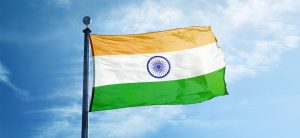
Adopted: 1947
The orange stands for courage and sacrifice, the white for peace and truth, and the green for faith and chivalry. The emblem in the center is a navy Ashoka Chakra (“Wheel of the Law”), a 24-spoke Bhuddist spinning wheel.
11. Fiji

Adopted: 1970
Essentially two flags in one, the Fiji flag is greatly influenced by the country’s long ties with Great Britian. The Union Jack at the top left is surrounded by a blue background to symbolize the Pacific Ocean. To the right is Fiji’s coat of arms, featuring a golden British lion holding a cocoa pod in its paws, above a sugarcane plant, a coconut palm tree, a dove of peace, and bananas.
12. Kazakhstan
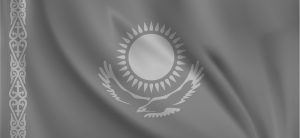
Adopted: 1992
Featuring a blue background for peace and tranquility, the Kazakhstani flag represents the progress and movement of the nation’s nomadic history. The central sun, a tool the nomads used to measure time, consists of 32 rays that symbolize the abundance and prosperity of the country. The steppe eagle soaring beneath the sun is a symbol of freedom and independence. On the left is the national ornament, which is closely tied to the culture and traditions of the Kazakh people.
13. Kenya
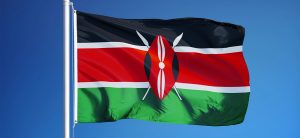
Adopted: 1963
The Kenyan flag tells a story of independence. The black represents the Kenyan people; the red symbolizes the blood spilled while fighting colonialism; the green depicts the country’s natural wealth; and the white seals the flag with peace. In the center, the Masai shield and spears portrays the defense of freedom.
14. Lebanon
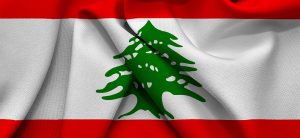
Adopted: 1943
The distinctive green cedar tree on the center of the Lebanese flag symbolizes immortality. The two red bands represent the blood that was shed during the country’s liberation, and the white band is for peace.
15. Mongolia
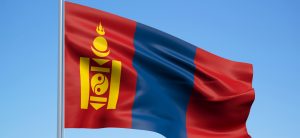
Adopted: 1911 (updated in 1992)
Originially representing communism and Mongol nationialism, the red and blue background still remains on the flag even though the communist regime was overthrown in 1992. The symbol on the left is a special character in the Soyombo alphabet. It features a column of abstract and geometric symbols, including the earth, fire, water, a sun, a moon, and a yin-yang. Can you find them all?
16. Nepal

Adopted: 1962
The Nepalese flag is the only non-quadrangular national flag. The crimson background comes from the color of the rhododendron, Nepal’s official flower, while the dark blue border signifies peace and harmony. Both are popular colors used in the Nepalese art culture. The two celestial bodies represent the hope that Nepal will last as long as the sun and the moon.
17. Papua New Guinea
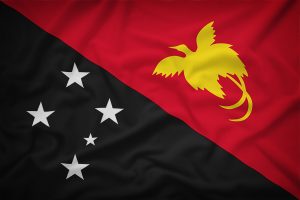
Adopted: 1971
In 1971, a 15-year-old girl won a nationwide competition to design Papua New Guinea’s flag. The flag incorporates the traditional colors of many Papua New Guinea tribes: red and black.
The top portion features a yellow silhouette of a ‘Kumul,’ a Raggiana bird-of-paradise, which can also be found on the country’s national coat of arms. The five stars depict the Southern Cross constellation which can be seen from the island.
18. Philippines
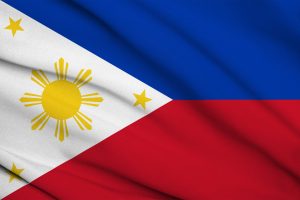
Adopted: 1898
The Filipino flag consists of three colors: blue for the willingness to sacrifice oneself for freedom, red for courage, and white for liberty and equality. The three stars around the sun represent the country’s main island groups: Luzon, Visayas, and Mindanao.





